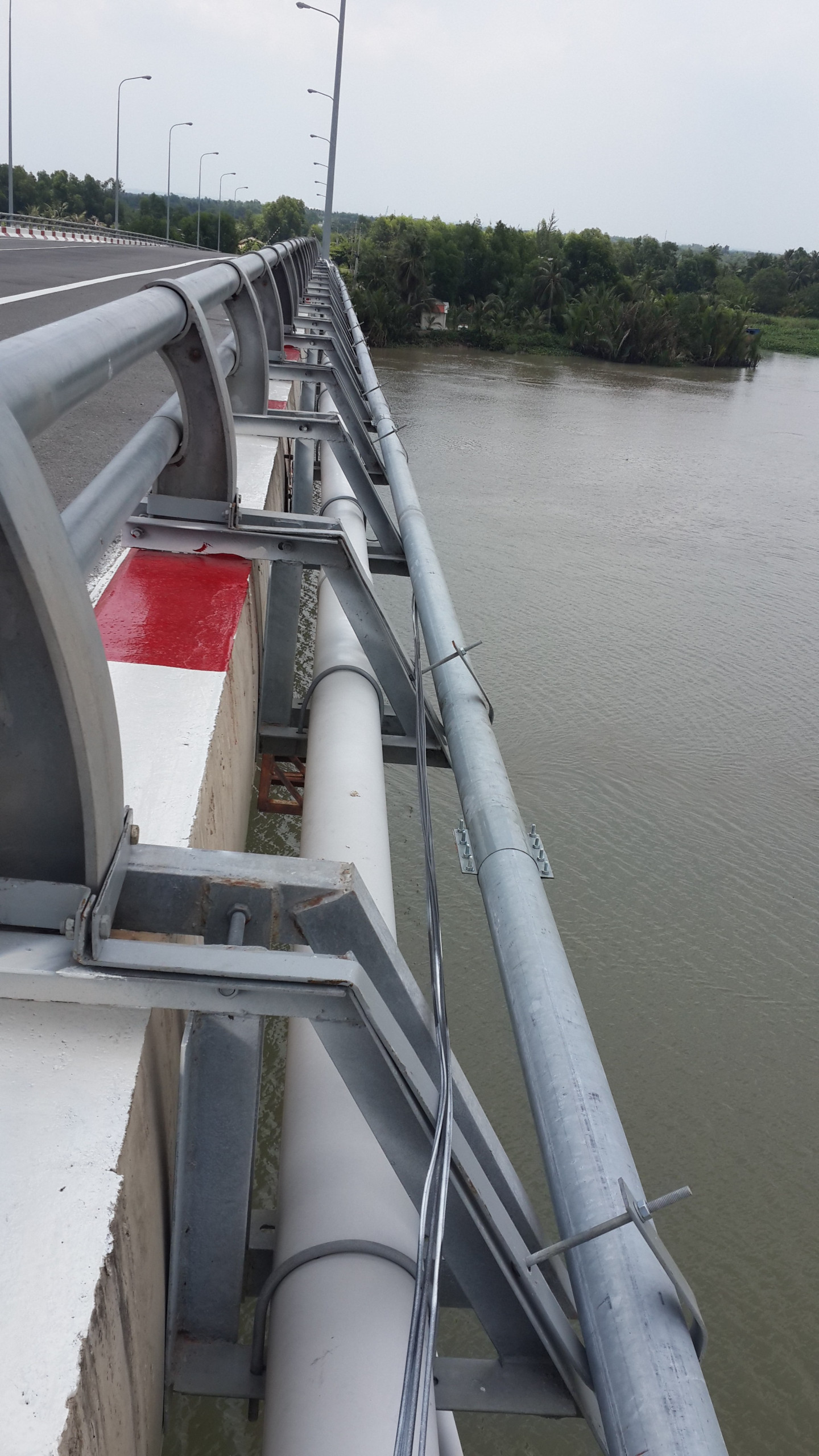Circular 20: Technical Regulations on Telecommunication Cables Crossing Rivers
Recently, the Ministry of Information and Communications agreed to issue Circular 20/2019/TT-BTTTT stipulating National Technical Regulations on the installation of peripheral telecommunications cable networks.
Technical regulations for telecommunications cables crossing rivers are specifically outlined in the National Technical Regulation on the installation of external telecommunications cable networks (QCVN 33:2019/BTTTT) issued attached to Circular 20/2019/TT-BTTTT as follows:

Illustrative image (internet source)
First, conditions for using cables across rivers: Cables across rivers are used in the following cases:
- When the cable route crosses large rivers, lakes, etc., and other cable installation methods cannot be implemented.
- River-crossing cables may be designed to be placed on bridges, suspended across rivers, or submerged across rivers.
Second, requirements for river-crossing cables:
- Submerged river cables must be selected with suitable reinforcement for the flow rate and depth of the riverbed.
- Cables placed on bridges must withstand vibrations or have anti-vibration measures.
- Suspended river cables must consider sag, tension, be able to bear the weight of the cable itself, and withstand storm wind forces for long crossings.
Third, requirements for the river-crossing cable route:
- Requirements for cables placed on bridges:- The location and technique for installing conduit on bridges must be agreed upon between the bridge management unit and cable management units.- The cable conduits must be securely installed on the bridge and not affect the structure and stability of the bridge.- Manholes or cable holes must be arranged at both ends of the bridge cable segment, with a minimum reserve of 5 m for copper cables and a minimum of 15 m for optical cables.- The cable position on the bridge must be marked.
- Requirements for suspended river-crossing cables:- The height of the river crossing poles must ensure the cable route has a safe clearance for traffic below and other relevant transportation sector requirements.- The suspended cable poles must be reinforced with anchors and braces, ensuring they can withstand impact loads.- Angle poles must not be used as river-crossing poles.- Cable tension must not exceed the allowable cable tension limit.
- Requirements for submerged river-crossing cables:- The installation position of submerged cables must be at least 100 m away from boat docking areas.- The distance from telecommunications cables to power cables in the same water without boat docking must be no less than 20 m.- The minimum trench depth is 1.5 m, and the minimum trench width is 1 m.- Submerged cables must be placed in galvanized steel pipes, with the pipe diameter selected to fit the installed cable size.- The pipe segment across the river must be placed in the center of the trench, and after being fixed in the trench, concrete panels of size 1000 x 500 x 300 (mm) must be covered on top.- The cable trench must be filled to the riverbed level.- Manholes or cable holes must be arranged at both ends of the river-crossing cable segment.- There must be a reserve cable length on both banks for future repairs. The reserve cable length for copper cables must be at least 5 m, and for optical cables, at least 15 m.- The river-crossing cable segment must be marked on both banks.
Fourth, grounding and lightning protection for river-crossing cable networks: As per grounding and lightning protection regulations for duct cable networks in section 2.2.5.
See more regulations at Circular 20/2019/TT-BTTTT effective from July 1, 2020.
Thu Ba
- Number of deputy directors of departments in Vietnam in accordance with Decree 45/2025/ND-CP
- Cases ineligible for pardon in Vietnam in 2025
- Decree 50/2025 amending Decree 151/2017 on the management of public assets in Vietnam
- Circular 07/2025 amending Circular 02/2022 on the Law on Environmental Protection in Vietnam
- Adjustment to the organizational structure of the Ministry of Health of Vietnam: Certain agencies are no longer listed in the organizational structure
- Vietnam aims to welcome 22-23 million international tourists in Vietnam in 2025
-

- Notable new policies of Vietnam effective as of ...
- 16:26, 11/04/2025
-
.Medium.png)
- Notable documents of Vietnam in the previous week ...
- 16:21, 11/04/2025
-
.Medium.png)
- Notable documents of Vietnam in the previous week ...
- 16:11, 02/04/2025
-
.Medium.png)
- Notable new policies of Vietnam to be effective ...
- 16:04, 02/04/2025
-
.Medium.png)
- Notable new policies of Vietnam effective from ...
- 14:51, 21/03/2025
 Article table of contents
Article table of contents
